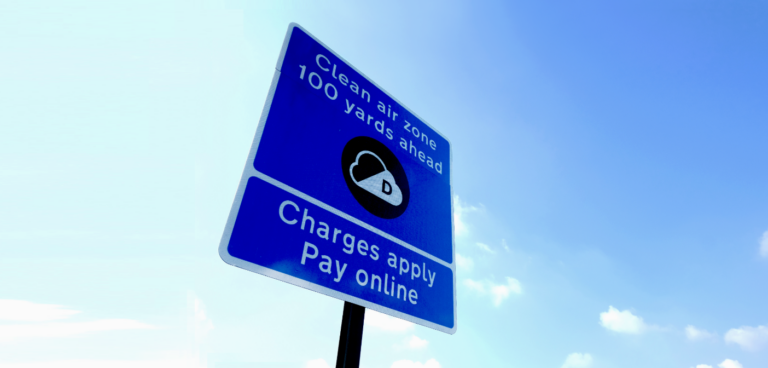John Thornton examines the potential long-term impact of Covid-19 on clean air zone initiatives in the UK…
It took only two weeks following the introduction of the UK lockdown on 23 March for the government to confirm that the launches of pollution-busting clean air zones (CAZs) would be postponed until it overcame the coronavirus pandemic.
The decision to delay until January 2021 at the earliest the introduction of all CAZ schemes, in which the dirtiest vehicles are deterred from urban centres by charges, was confirmed by Rebecca Pow, a junior minister at the Department for Food, Environment and Rural Affairs, in a letter to David Wells, chief executive of the FTA, in early April.
But this was after several city councils with CAZs planned for 2020, including Leeds, Birmingham and Oxford, had reluctantly written to the government requesting permission to delay their respective schemes due to the impact of the crisis.
“We’re asking for more time – it’s not appropriate at the moment to move forward with the current timetable,” said Leeds City Council leader Judith Blake. Likewise, Waseem Zaffar, cabinet member for transport and environment at Birmingham City Council admitted that “the current situation has meant we need to make changes to our original plans”.
“Covid-19 is having a profound impact on the economy of the city and our preparations for the clean air zone,” said Zaffar, before reaffirming that “air pollution remains an on-going concern for this city”.
“Once we have addressed coronavirus in the immediate term, poor air quality will continue to be a significant issue in the long term, and we should not be complacent,” he said. “We believe that a clean air zone in Birmingham remains the most effective way of making a sustainable improvement to Birmingham’s air quality and we will continue to put in place the infrastructure required to support it.”
Meanwhile, Oxfordshire County Council and Oxford City Council, which had proposed a December 2020 launch for a city-centre Zero Emission Zone (ZEZ), issued a joint statement acknowledging that “businesses should not be expected to devote time to the detailed logistical planning required for the Oxford ZEZ” amid the current situation.
And in London, the congestion charge, low emission zone (LEZ) and ultra-low emission zones were all suspended until the government insisted on their reinstatement as part of a £1.6bn bailout of Transport for London. A tightening of standards for the LEZ, due in October, was also pushed back by four months.
A silver lining
While the CAZ delays were universally accepted as necessary, to ease the travel of key workers such as NHS staff and essential deliveries, there was a risk that much of the momentum gained in recent years to improve air quality in the UK’s towns and cities would be lost in the corridors of power.
And with air pollution estimated to cause about 40,000 early deaths a year in the UK, there was also legitimate concern that the public might take advantage of the relaxing of exclusionary and price-based measures that address both air quality and traffic congestion.
However, at the height of the lockdown, road travel quickly plummeted by as much as 73%, to levels not seen since 1955. By May, huge cuts in air pollution had been recorded throughout the UK.
Independent experts from Ricardo Energy and Environment modelled what air quality would have been like without lockdown measures in place and compared this with the actual measurement obtained at 29 monitoring sites across the UK, including in London, Edinburgh, Glasgow, Birmingham, Bristol, Southampton and York.
The company modelled the expected changed in air pollution between 16 March – before the start of the coronavirus lockdown on 23 March – and early May, and compared this to actual data from the monitoring sites. By removing the influence of weather on air pollution it was possible to identify falls that can be directly attributed to the coronavirus lockdown.
As such, Oxford had the highest percentage reduction in nitrogen dioxide (NO2) – a key pollutant produced by vehicles – across the sites (59%), followed by Glasgow (55%), Leeds (54%), York (54%), Edinburgh (47%) and Manchester (46%). The average fall in NO2 across the 29 sites was 34%.
Around the same time, the government announced a £250m emergency investment to fund walking and cycling schemes that encourage more active travel in urban areas and help reduce the burden on public transport networks unable to operate at full capacity due to social distancing rules.
This investment, combined with the likes of London’s Streetspace and Manchester’s SafeStreetsSaveLives active travel programmes, as well as Department for Transport’s fast-tracking of e-scooter trials by a year, suggests that the UK is serious about capitalising on the gains made in improved air quality as a result of the lockdown measures.
Stay the course?
But should this active travel eutopia actually be realised – one in which urban dwellers eschew cars, buses and trains for bicycles and other sustainable transport modes, and air pollution continues to decrease – where does that leave CAZs in the post-Covid-19 world?
Peter O’Driscoll, UK managing director of cashless parking provider, RingGo, believes CAZs will still be needed in the ‘new normal’, but won’t operate as first planned: “Local government will contend with diminished budgets, so lower cost options will need to be explored. The ULEZ has had success in London but the problem is that it costs money to implement.”
Wolf Ketter, professor of information systems for sustainability at the University of Cologne, and energy policy adviser to the German government, is an expert in renewable energy and electric vehicles. He also raises the issue of cost when implementing existing measures post-pandemic.
“If you want to ensure adequate air quality post-Covid, CAZs of some form or another are still required. Having said that, I expect that equity concerns will be voiced even more prominently in an economic climate of recession. We may need to re-think the equity of CAZ constructions, particularly for those groups that have few other options but to travel.”
According to O’Driscoll, alternative schemes such as emissions-based parking allow councils to quickly
and inexpensively offer variable tariffs based on the emissions of each vehicle parking in the city. “It is automatic and flexible, so can be tailored to individual city needs, set up in a matter of weeks and requires no fixed infrastructure – which considerably reduces initial investment by local governments.
“Westminster’s nitrogen dioxide levels have dropped by 38% in the two years since emissions-based parking was introduced. Strategically managing transport via technology will become crucial to councils who want to solve mounting pollution and congestion problems.”
Another way
Some local authorities in England, including Derby and Nottingham, have been vocal in their criticism
of the CAZ concept. Portsmouth, which was recently issued with a fourth ministerial direction to implement a Class B CAZ by the end of 2021, is another sceptic.
“A CAZ is not our preferred approach to addressing air pollution in Portsmouth, especially during these unprecedented times, but we have to comply with
the ministerial directive or face legal action from government,” admits councillor Gerald Vernon-Jackson, leader of Portsmouth City Council.
Elsewhere, Coventry City Council is one local authority that does not believe that CAZs are required in post-Covid world. Earlier this year the council confirmed that it will not introduce a CAZ after the government backed its alternative emissions reduction proposals. The decision means Coventry does not require a Class D charging CAZ, which would have seen higher emission vehicles charged for entering a large area of the city. Instead, it has been awarded grant funding of £24.5m to implement a series of measures to reduce nitrogen dioxide emissions.
Plans include highways engineering; improved traffic management; cycle routes; travel planning; upgrading bus fleets; supporting a shift to electric taxis; as well as encouraging the uptake of electric cars and installing more charging points. The legal direction from the government means that Coventry now needs to submit a final full business case, which will feature more details on the schemes now due to get underway.
According to councillor Jim O’Boyle, Coventry City Council has worked closely with the government’s Joint Air Quality Unit since June 2019 and stresses that the council has consistently argued against a CAZ.
“In June last year we clearly set out why a CAZ would not work in Coventry and is not needed. The government’s decision is excellent news and means any CAZ that would have been imposed – affecting 82,000 residents or 25% of our residents – has been stopped. A CAZ in Coventry would have potentially created worse air quality on many residential roads bordering the charging zone as drivers would have sought alternative routes to avoid the CAZ.”
In the UK, there is a clear split among local authorities in favour of introducing a CAZ and those that are not. Has the positive impact of Covid-19 lockdown measures on the environment changed either camp’s perspective on the concept? It’s perhaps too soon to tell.
But should the government be successful in banning the sale of all new petrol, diesel and hybrid vehicles by 2035, on its way to turning the UK into a net zero carbon country by 2050, then the CAZ concept could become a crucial one, albeit one with a predetermined expiry date.
This article originally appeared in the June 2020 issue of CiTTi Magazine





